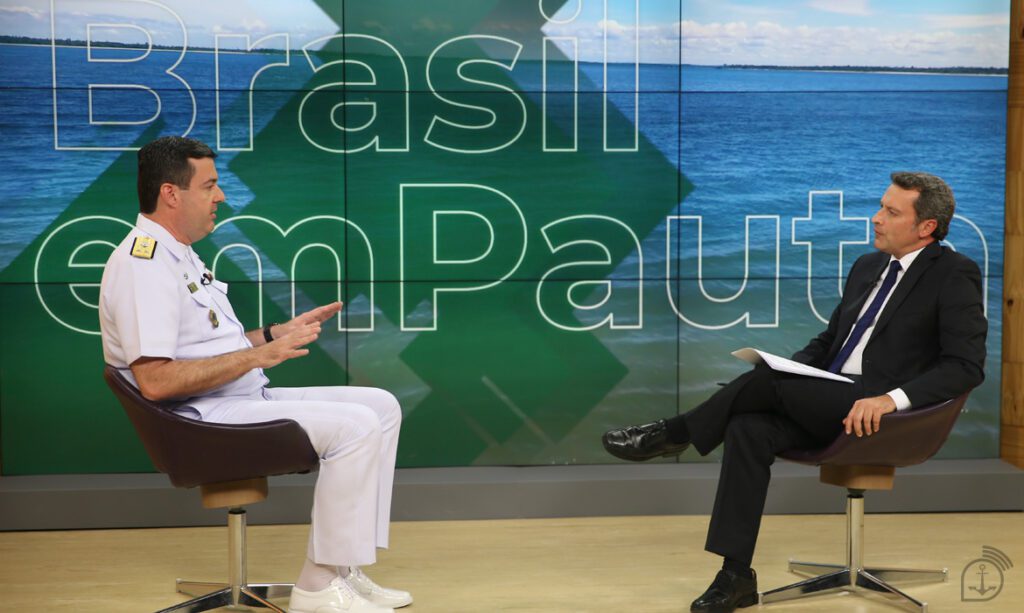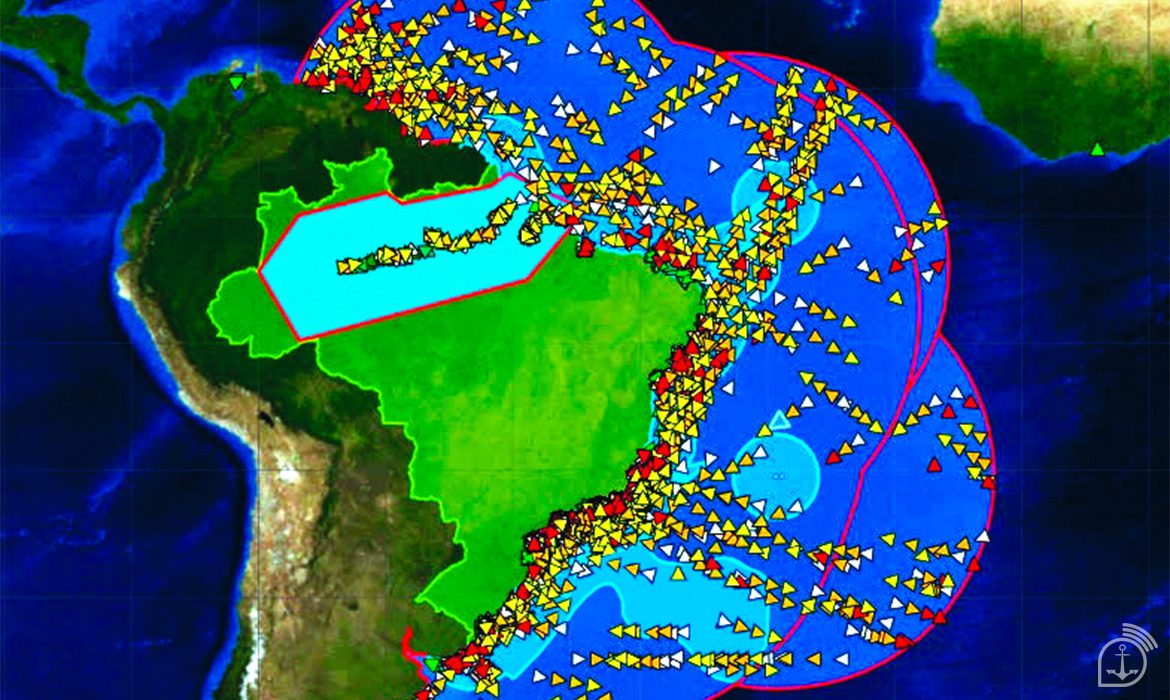In an interview, the Commander of Maritime Operations and Blue Amazon Protection emphasizes the importance and consolidation of the system
By Lieutenant-Commander (RM2-T) Luciano Franklin de Carvalho – Brasília, DF
With the reappearance of oil residues on some beaches in the northeast of Brazil this September, measures have been adopted to analyze these fragments, as well as to increase the fight against water pollution along the Brazilian coast. In this sense, the Blue Amazon Management System (SisGAAz), developed by the Brazilian Navy (MB) is one of the main tools for monitoring and protecting Brazilian Jurisdictional Waters (AJB).
In an interview to Agência Marinha de Notícias, the Commander of COMPAAZ – Maritime Operations and Blue Amazon Protection Command, Rear-Admiral Gustavo Calero Garriga Pires, talks about the system’s capabilities and integration with other monitoring programs. Headquartered in Rio de Janeiro (RJ), the military organization is the central body for this monitoring and can also be classified as an interagency organization, with the collaboration of different bodies such as the Federal Police, Internal Revenue Service, Ibama, and ICMBio.

How does the SisGAAz work?
Admiral Garriga: SisGAAz integrates equipment and systems composed of radars located on land, aircraft, and vessels, in addition to high resolution cameras and capabilities such as the fusion of information received from collaborative systems. Among these integrations are the Maritime Monitoring System in Support of Petroleum Activities, SIMMAP, the Long Range Identification and Tracking System (LRIT), and the National Program for the Satellite Tracking of Fishing Vessels (PREPS). All these systems are based on satellite position tracking. The data captured from GPS are transmitted via satellite communication to tracking centers and, in the future, acoustic sensors will be incorporated into the monitoring sites.
SisGAAz facilitates the planning of operations and reduces costs, especially in the areas to be inspected and patrolled, which involve the displacement of personnel. The capacity obtained with its implementation allows environmental violations, such as the pollution that affected the northeastern coast, for example, to be mitigated through prompt response, intelligence, and deterrence actions.
What measures has the Navy been adopting regarding water pollution?
Admiral Garriga: The Navy has invested in the SisGAAz, a strategic program of the Force, which is also indispensable for the prevention and repression of water pollution. When it comes to oil, a Technical-Scientific Commission was created in 2020 for the Advisory and Support of Monitoring and Neutralization Activities of the Impacts Resulting from Marine Pollution by Oil and Other Pollutants in the Blue Amazon – the ComTecPolOil.
As a result of the commission’s work, a multi-user system was established for the detection, prevention, and monitoring of oil at sea, the result of an integration of projects and initiatives promoted by the Navy and by the Ministry of Science, Technology, and Innovation. The partnership has allowed an increase in the area of personnel training, through scholarships and other expenses that facilitate the mobilization of personnel involved in the future system.
The Navy also participates in the Monitoring and Evaluation Group (GAA), which has become a collegiate body of a permanent nature, also composed of representatives from IBAMA and the National Petroleum Agency, in the context of the National Contingency Plan. Besides this, several actions have been carried out, by means of its Groupings, Port Captaincies, Stations, and Agencies, among which we highlight Naval Inspections and Naval Patrols. The COMPAAz and the Regional and Local Centers for Maritime or Fluvial Safety carry out analysis of maritime traffic information by monitoring ships that pass through our Jurisdictional Waters.
What is the Navy’s responsibility in combating oil slicks?
Admiral Garriga: It is the Navy’s responsibility, as the Brazilian Maritime Authority, to be responsible for the safety of waterway navigation, to safeguard human life and to prevent environmental pollution, as well as to implement and enforce compliance with laws and regulations, at sea and inland waters. The Force acts in coordination with other agencies of the Executive Branch, federal or state, when necessary, due to specific competencies.
What are the lessons learned in the case of the oil appearance in 2019?
Admiral Garriga: There are several lessons, such as the importance of developing monitoring within SISGAAz. However, I would like to highlight another lesson from this episode: the relevance of the involvement of the scientific community to guide the response actions to the incident. We observed that, after facing the oil spill in 2019, the investment in oceanic research contributed, significantly, to the actions of the Maritime Authority and the federal environmental agencies. In this sense, ComTecPolÓleo seeks to fill this vacuum, through an inclusive articulation with the Ministry of Science, Technology and Innovation, research institutes, universities and environmental agencies.
The oil spill in 2019 demonstrated that these threats need to be better understood and faced by Brazilian society. This evolution is exemplified by the actions developed by the state and municipal authorities of Ceará, with the support of the Navy and the environmental agencies of the federal sphere. The need to provide the country with a national legislation that contributes to the monitoring of the Blue Amazon was also foreseen. In this sense, changes were promoted in the Norms of the Maritime Authority to require that national and foreign vessels, in transit, operation and permanence in the Blue Amazon and in the Maritime Search and Rescue Area, Brazilian SAR area, operate permanently with automatic identification equipment.
The revision of the National Contingency Plan, contemplated by Decree 10.950/2022, contributes to increase the response capacity and contemplates the participation of several agencies of the Federal Executive Branch through the integrated action network. In order to better protect the Blue Amazon, the acquisition of new means is necessary to replace those that have been withdrawn from service and those that have outlived their useful life.
What I can say is that the Navy has acted, permanently, through the Maritime Authority structure to expand, together with the Scientific Community, the participation of the Academy, in order to guide, advise and expand the response actions in an eventual incident.
*** Translated by the DEFCONPress FYI Team ***
